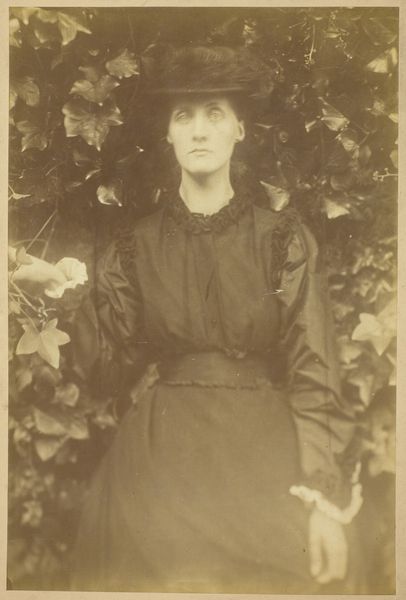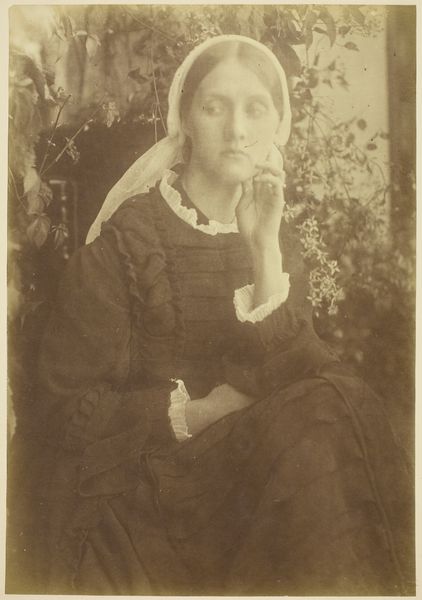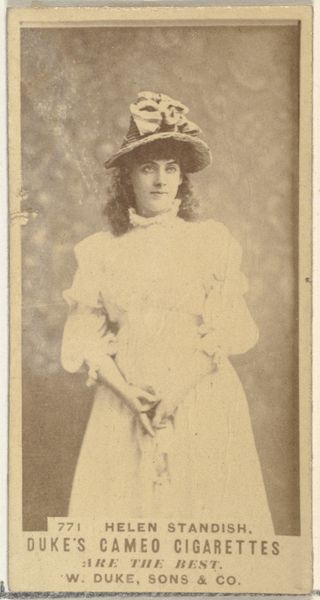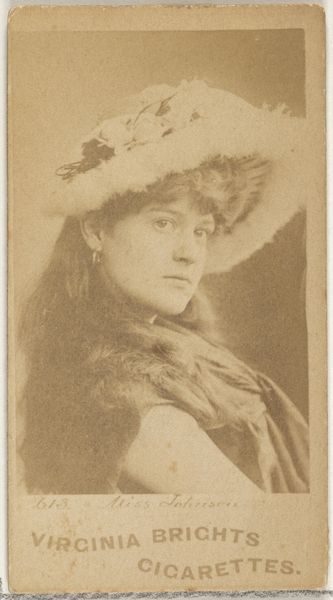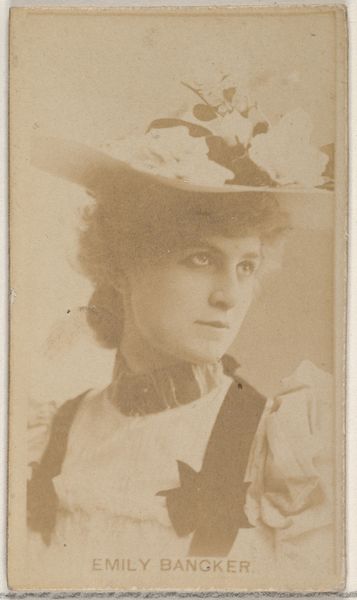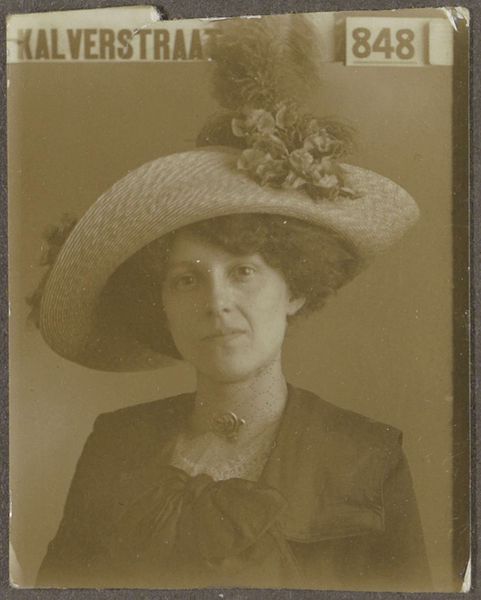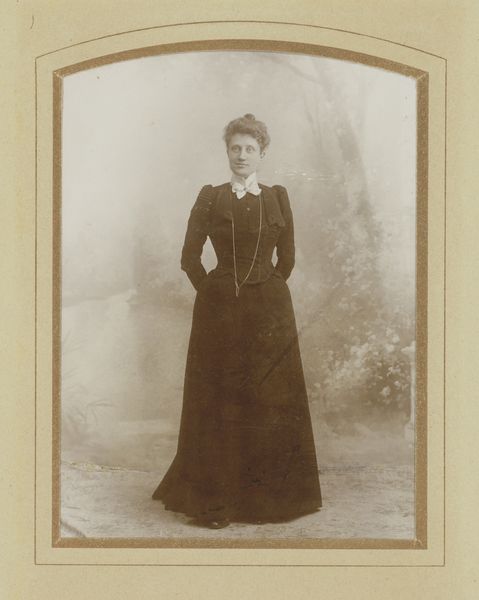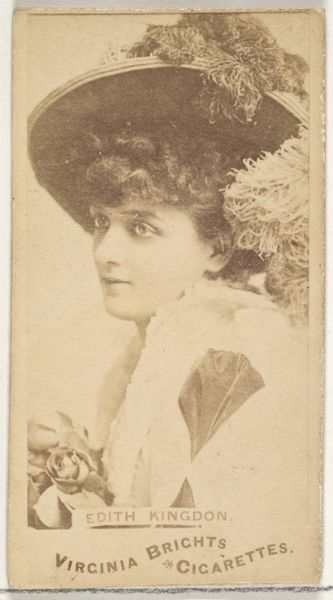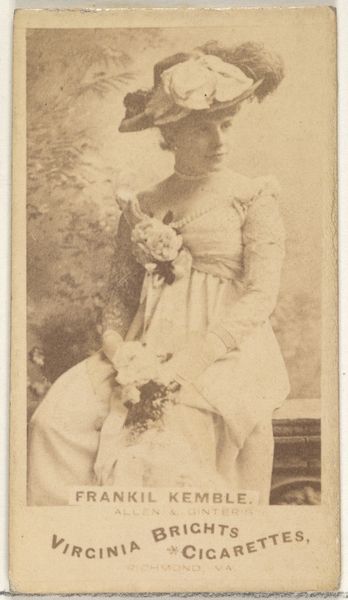
Dimensions: 35.7 × 26.8 cm (image); 44.3 × 35.4 cm (mount)
Copyright: Public Domain
Curator: Welcome. Here we have Julia Margaret Cameron’s portrait, "Mrs. Herbert Duckworth," an albumen print dating back to 1874. It is now held here at the Art Institute of Chicago. Editor: My first impression is a rather unsettling romanticism. There's a sense of stillness, almost as if she's a woodland spirit captured in sepia tones, fading away just as we look at her. The soft focus gives her an ethereal quality that both fascinates and disturbs. Curator: Yes, the romantic influence is very much present in Cameron’s approach. We see the echoes of Pre-Raphaelite painting, but also the psychological probing characteristic of Victorian portraiture. Note the strategic use of ivy framing Mrs. Duckworth, its tendrils both enclosing and enhancing her presence. Editor: That ivy… it almost feels like it's swallowing her whole, a suffocating embrace. Is it meant to symbolize domesticity, or perhaps the constraints placed on women during that era? It's both beautiful and unnerving to think about what Cameron might be trying to communicate about women’s confinement within marriage. Curator: Indeed, ivy often represented fidelity and enduring love, but you are right; its density here suggests something more complex. Considering Mrs. Duckworth, later Julia Stephen and mother to Virginia Woolf and Vanessa Bell, perhaps we are glimpsing a quiet fortitude, a resilience behind those deep-set eyes that portend her future role as the matriarch of the Bloomsbury Group. Editor: Knowing that, it’s hard not to search for hints of that intellectual and creative fire in her gaze, even muted by the romantic, dreamlike style of the photography. Cameron must have sensed something special in Mrs. Duckworth. Curator: Certainly, Cameron had a keen eye for capturing more than just a likeness; she strived for an emotional and spiritual truth, even at the expense of sharp focus and conventional beauty. That's why her portraits endure—they reveal character. Editor: Right. What might appear at first glance to be merely a softly blurred romantic image holds such psychological weight! The technical "imperfections," actually become expressive elements, hinting at interior depth, challenging conventional portraiture by embracing emotion over simple representation. Curator: Looking at Mrs. Duckworth here, enveloped by her leafy setting, one can see it is more than a photograph, it’s a statement of artistic and psychological intent, a layered glimpse into Victorian womanhood. Editor: Indeed. A gentle, yet unnerving and enduring mystery. I will surely be haunted by Mrs. Duckworth as I leave here today.
Comments
No comments
Be the first to comment and join the conversation on the ultimate creative platform.
